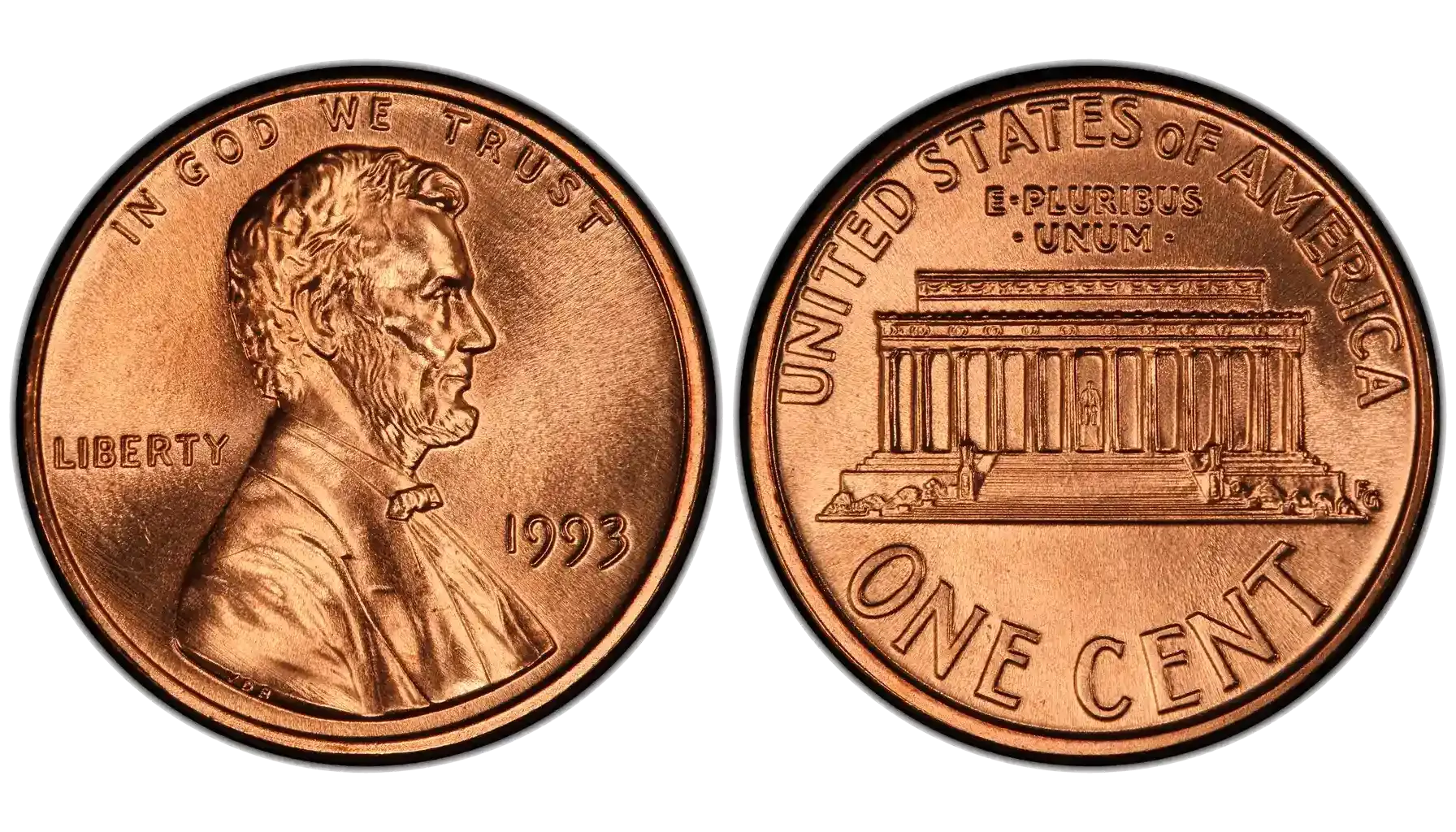Contents:
Here are key aspects of what focused collectors do:
Conduct Thorough Research and Education: Focused collectors are perpetual students of numismatics. When someone chooses an area of interest they dedicate time to study its history while also exploring the mints and coin types and market developments.
A person who wants to learn about their chosen subject area must read specialized literature together with periodicals and employ the online coin identifier tool to recognize their coins while they must master their coin grading system knowledge.
Specialize in a Niche: Instead of acquiring any coin, focused collectors narrow their interests to a specific area. This could be coins from a particular country, a historical period, a specific denomination, error coins, commemorative issues, or even a theme. Keep eye on there is no such thing as a 1970 gold dime as dimes of this era were made of copper-nickel clad.
Prioritize Quality and Condition: Many people wonder, are 1970 dimes worth anything beyond their face value, especially if they are not in pristine condition. They recognize how essential professional grading serves for authentication purposes along with accurate coin state evaluations because condition represents a major factor which determines value and desirability in their specific domain.
The 1970 No Mint Mark Roosevelt Dime (Philadelphia)
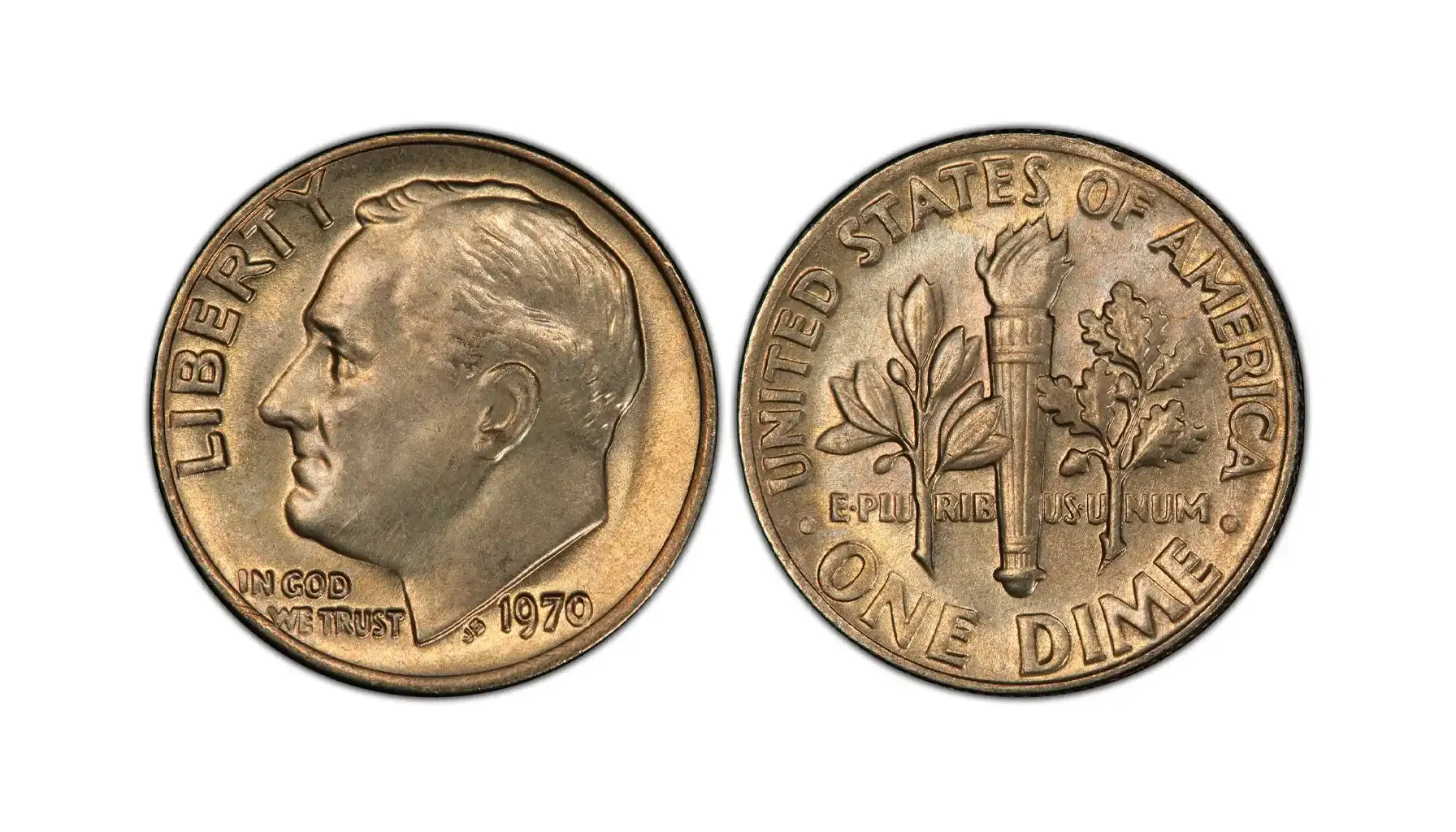
The 1970 Roosevelt dime is a common coin, but certain varieties can be valuable. The Philadelphia Mint was the primary U.S. Mint and typically did not place a mint mark on its circulating coinage during this era. In 1970, Philadelphia produced a substantial 354,805,000 Roosevelt Dimes for general circulation.
These coins were widely distributed and used in everyday commerce. Due to their very high mintage, 1970-P dimes are readily available in circulated grades. Finding them in pristine uncirculated condition with full luster and minimal bag marks can still be a challenge.
Composition: 75% Copper, 25% Nickel (There was no standard circulation 1970 silver dime as dimes switched to a clad composition in 1965)
Weight: 2.268 grams
Diameter: 17.91 millimeters
Mintage: 354,805,000
Market Value
Grade | Approximate Value (USD) |
G-4 | $0.10 |
VF-20 | $0.10 |
AU-50 | $0.25 |
MS-60 | $0.50 |
MS-63 | $2.00 |
MS-65 | $8.00 |
FB MS-65 | $25.00~ |
MS-66 | $15.00 |
FB MS-66 | $45.00~ |
MS-67 | $100.00~ |
FB MS-67 | $300.00~ |
How much is a 1970 dime worth may vary depending on the coin's condition, market demand, and other factors.
The 1970-D Roosevelt Dime
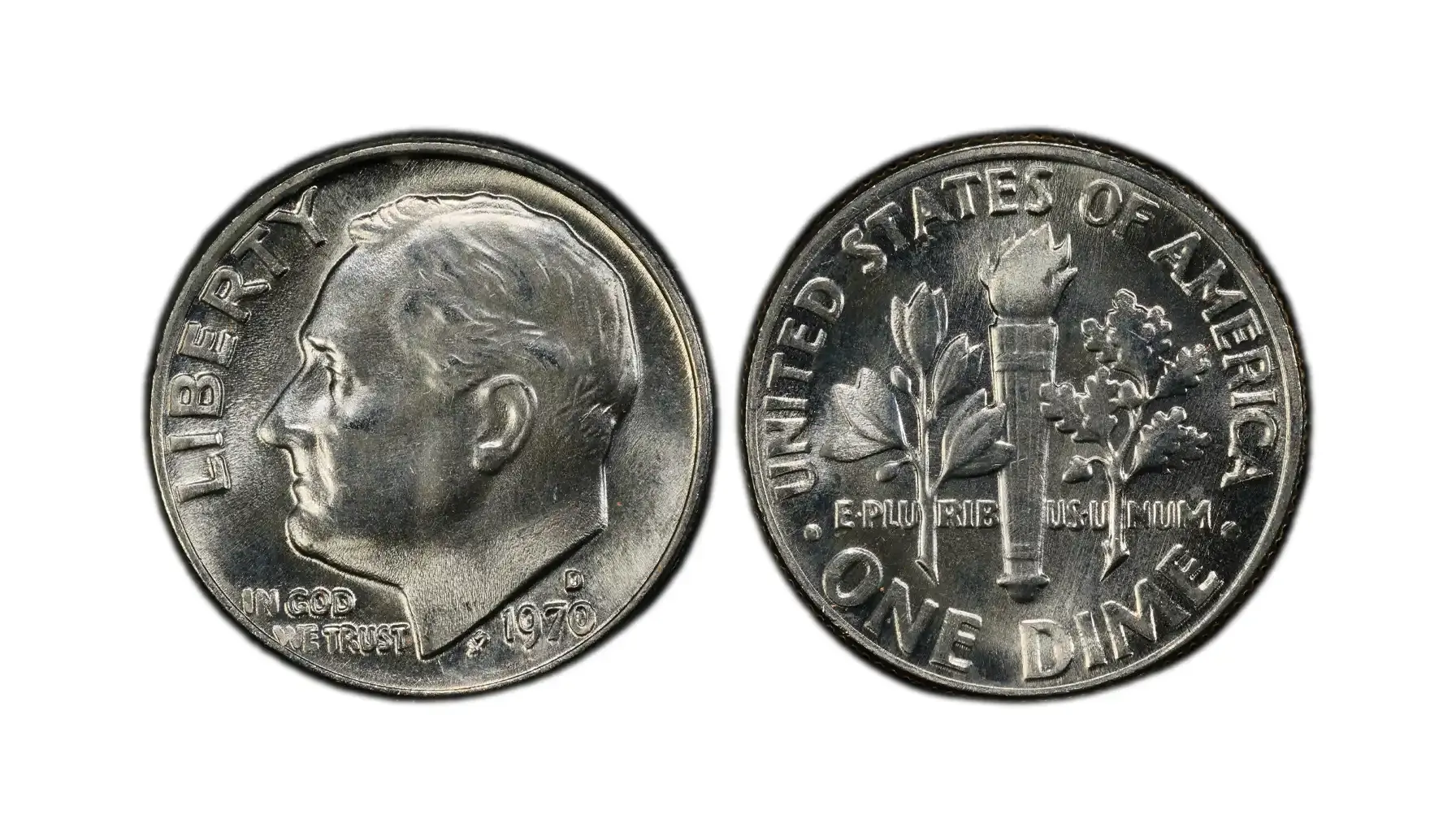
Collectors often inquire about the 1970 D dime value to assess its worth.
In 1970, the Denver Mint produced an even larger quantity than Philadelphia, striking 520,380,000 Roosevelt Dimes. As with the Philadelphia issue, these coins were intended for and widely used in circulation. While high-grade examples can be found, they often exhibit typical contact marks from mint bags and handling. Later our specialized guide detailing the 1970 D dime error list with pictures can help you to identify valuable anomalies.
Composition: 75% Copper, 25% Nickel
Weight: 2.268 grams
Diameter: 17.91 millimeters
Mintage: 520,380,000
Market Value
Grade | Approximate Value (USD) |
G-4 | $0.10 |
VF-20 | $0.10 |
AU-50 | $0.25 |
MS-60 | $0.50 |
MS-63 | $2.00 |
MS-65 | $8.00 |
FB MS-65 | $25.00~ |
MS-66 | $15.00 |
FB MS-66 | $45.00~ |
MS-67 | $100.00~ |
FB MS-67 | $300.00~ |
The 1970 dime no mint mark value may vary depending on the coin's condition, market demand, and other factors.
The 1970-S Roosevelt Dime (Proof)
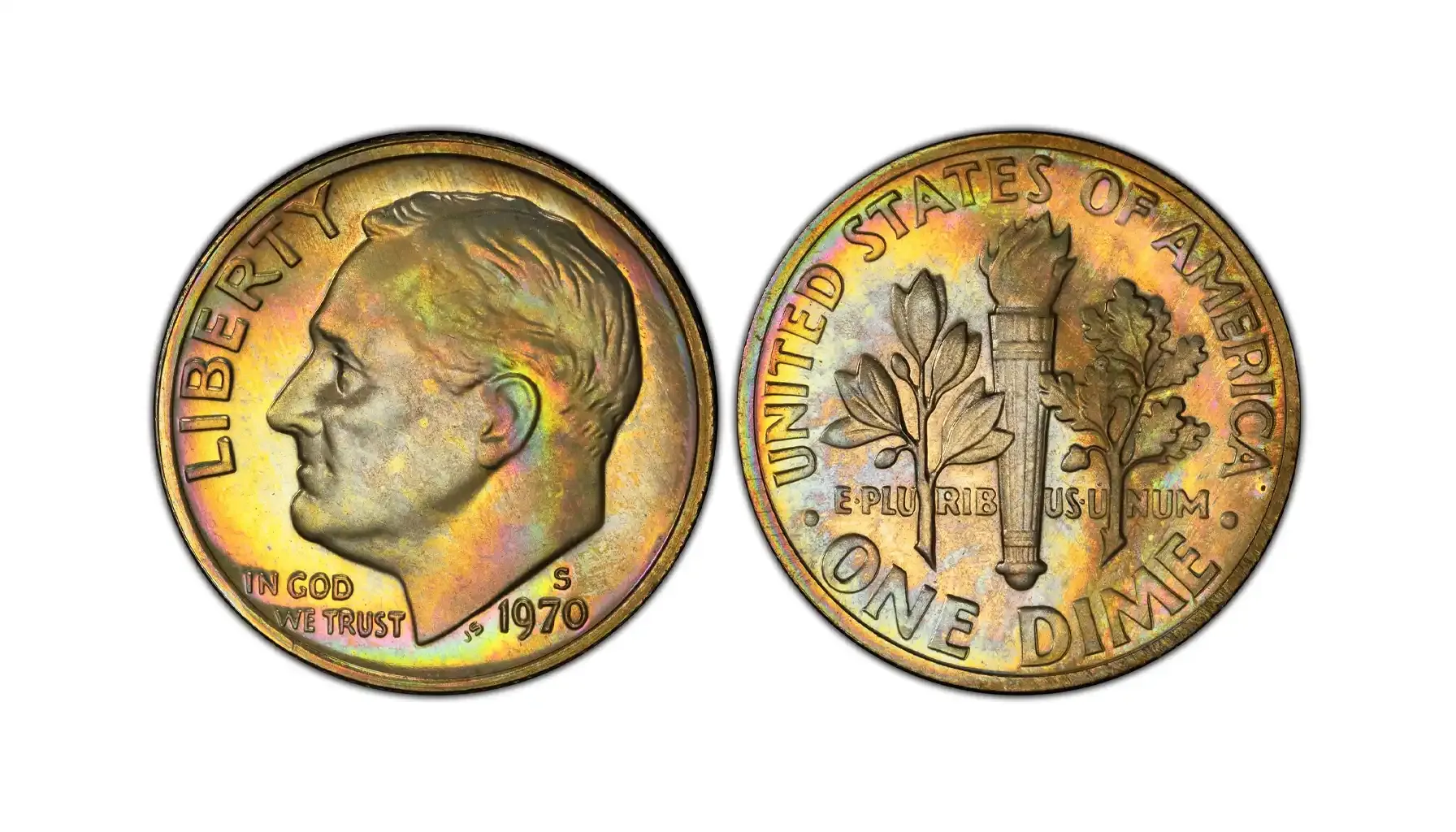
Many new collectors ask, where is the mint mark on a 1970 dime? It's usually above the date on the obverse. The 1970-S Roosevelt Dime with an "S" mint mark was struck at the San Francisco Mint.
During this period, the San Francisco Mint primarily produced proof coinage for collectors. In 1970, the San Francisco Mint struck 2,630,000 Roosevelt Dimes, which were only released in official U.S. Mint Proof Sets. This means that no 1970-S dimes with the "S" mint mark were released into general circulation. As proof coins, they were struck with polished dies and specially prepared planchets, resulting in a highly reflective, mirror-like field and frosted design elements. This makes them distinct from the circulating issues of Philadelphia and Denver.
Composition: 75% Copper, 25% Nickel
Weight: 2.268 grams
Diameter: 17.91 millimeters
Mintage (Proof): 2,630,000
Market Value
Grade | Approximate Value (USD) |
PR-60 | $0.50 |
PR-65 | $1.00 |
PR-67 | $3.00 |
PR-68 | $10.00 |
PR-69 | $25.00~ |
PR-70 (Perfect) | $200.00~ |
The 1970 S dime value may vary depending on the coin's condition, market demand, and other factors.
The 1970 No S (Proof) Dime
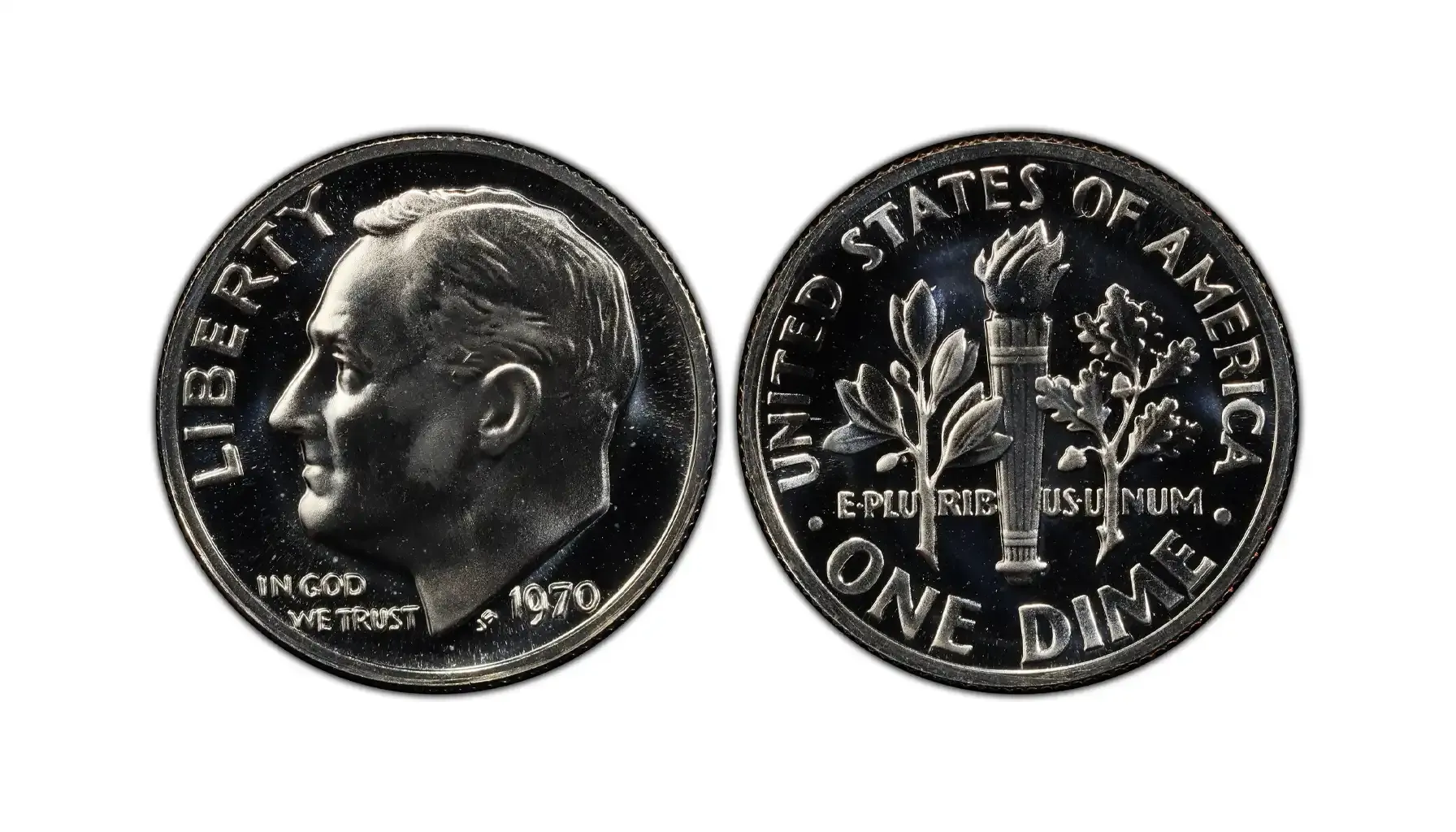
Within the 1970-S proof dime production, a truly remarkable and highly significant error occurred: the 1970-S No S Proof Dime. A small, unconfirmed number of proof dimes were accidentally struck from a working die that was missing the "S" mint mark. This happened because, at the time, mint marks were manually punched onto working dies at the San Francisco Mint. If the "S" punch was simply omitted or poorly applied and subsequently polished away, a die without a mint mark would then strike coins.
This "No S" variety is an authentic and extremely scarce mint error, making it one of the key modern error coins in U.S. numismatics. It is intensely sought after by collectors and commands substantial premiums. It is crucial to remember that these "No S" dimes are proof coins and should exhibit the typical mirrored fields and frosted devices characteristic of proof coinage. Any 1970 no S dime circulating dime found without a mint mark is common and not this rare error.
Composition: 75% Copper, 25% Nickel
Weight: 2.268 grams
Diameter: 17.91 millimeters
Mintage (Proof): 2,200
Market Value
Grade | Approximate Value (USD) |
PR-60 | $300 - $600 |
PR-65 | $500 - $1,200 |
PR-67 | $1,500 - $4,000 |
PR-68 | $4,000 - $10,000~ |
PR-69 | $10,000 - $25,000~ |
The 1970 dime value no mint mark may vary depending on the coin's condition, market demand, and other factors.
Doubled Die Errors
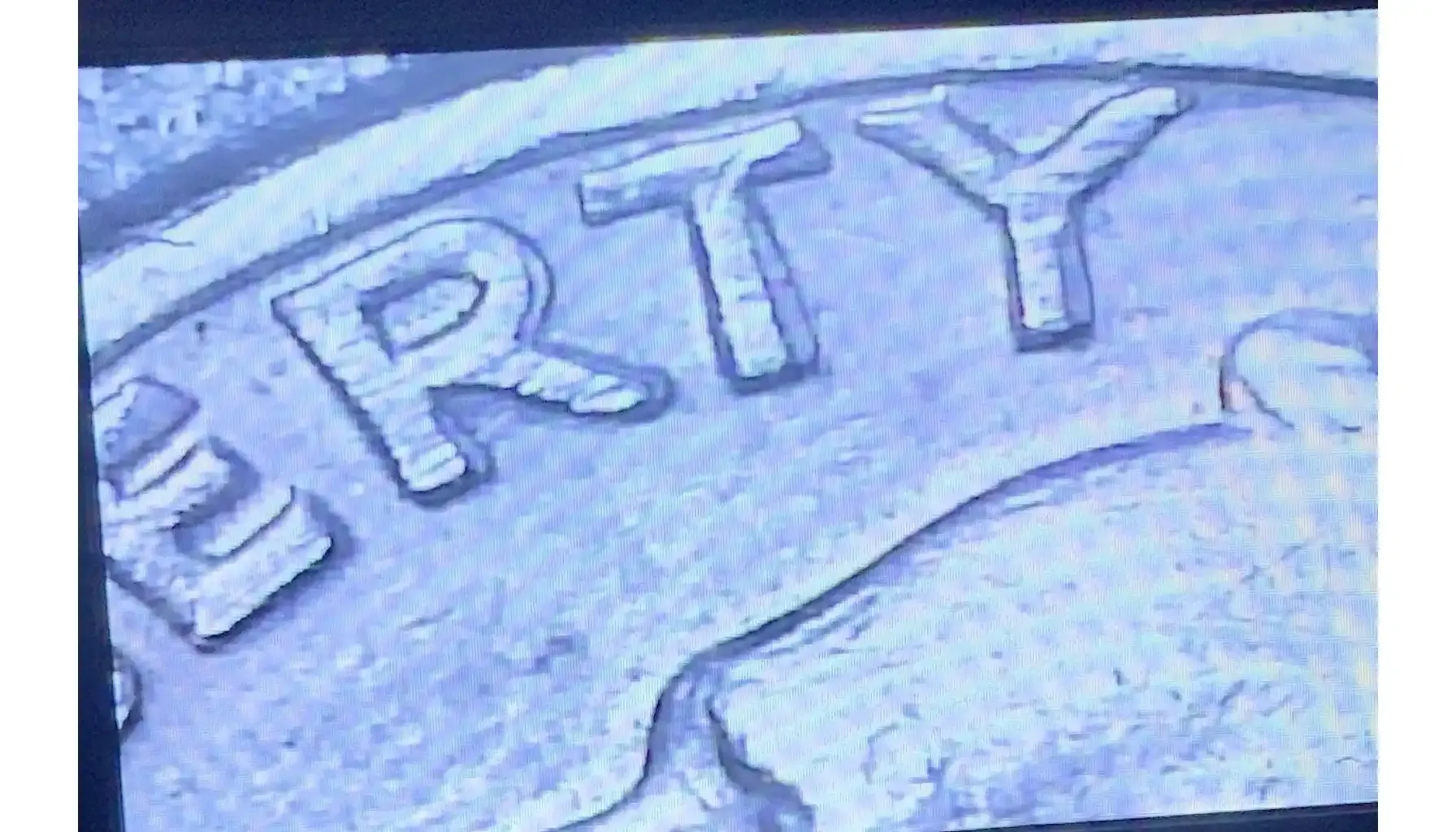
Identifying 1970 dime errors can transform a common coin into a highly sought-after collectible. This error occurs when the die used to strike the coin receives multiple, slightly misaligned impressions from the hub, resulting in a doubled appearance of design elements. For 1970 Roosevelt Dimes, DDOs and DDRs can affect areas like the date, "LIBERTY," "IN GOD WE TRUST," or the torch and lettering on the reverse. While not as prominent as some earlier series, minor to moderate doubling can occasionally be found.
Market Value
Grade and Visibility | Approximate Value (USD) |
XF-40 (Minor) | $10 - $30 |
AU-50 (Minor) | $20 - $75 |
MS-60 (Moderate) | $50 - $150 |
MS-63 (Strong) | $100 - $300 |
MS-65 (Strong) | $200 - $750~ |
How much is a 1970 D dime worth may vary depending on the coin's condition, market demand, and other factors.
Off-Center Strikes
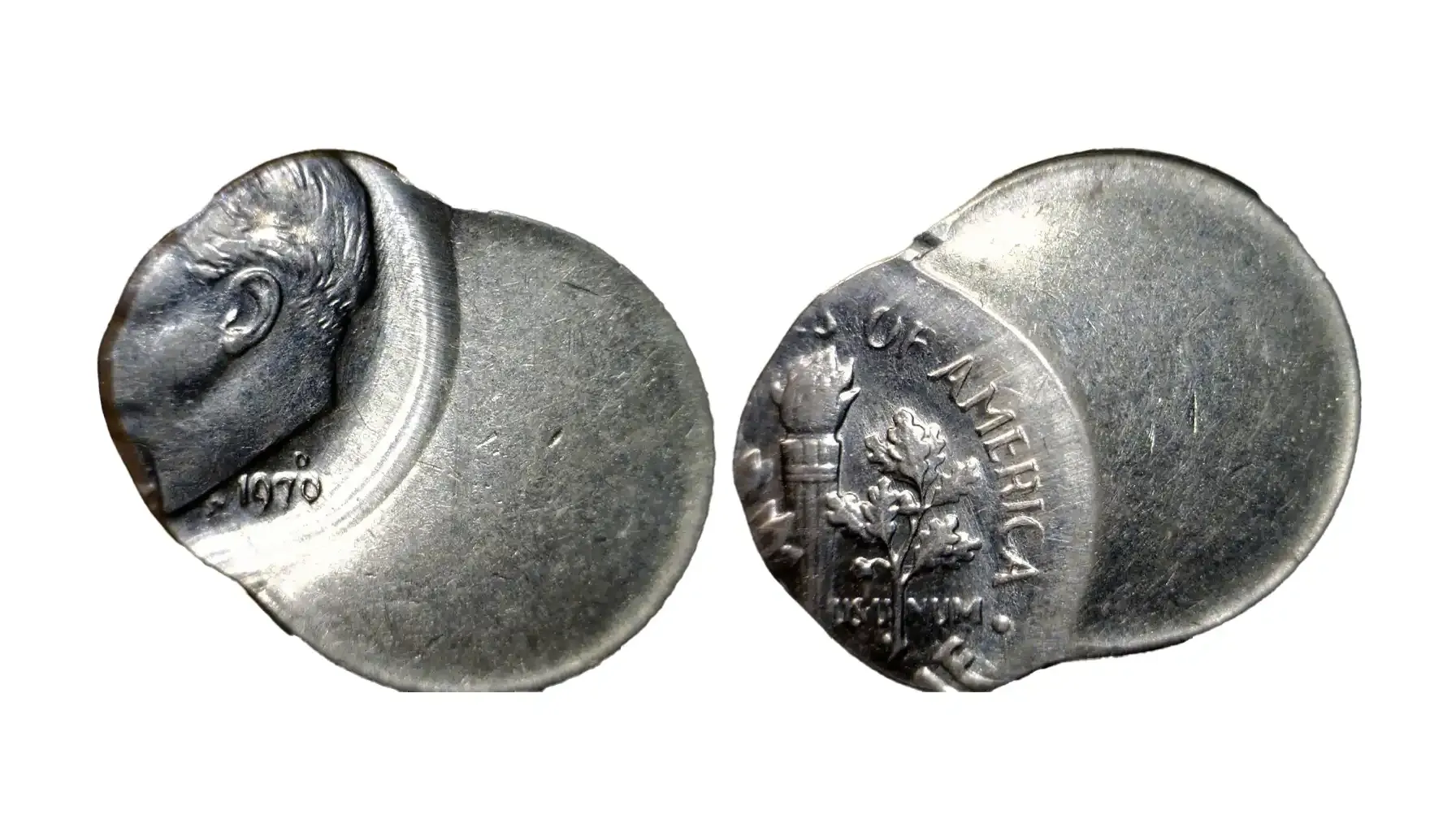
An off-center strike occurs when the planchet is not properly centered between the dies when the coin is struck, resulting in part of the design being missing and a blank area visible on one side. The value depends on the degree of off-centerness and whether the date and mint mark are still visible. Dramatic off-center strikes are more valuable.
Market Value
Degree Off-Center | Approximate Value (USD) |
10% Off-Center | $15 - $40 |
25% Off-Center | $30 - $80 |
50% Off-Center | $75 - $200 |
75%~ Off-Center (Dramatic) | $200 - $500~ |
The 1970 dime error value may vary depending on the coin's condition, market demand, and other factors.
Struck Through Errors
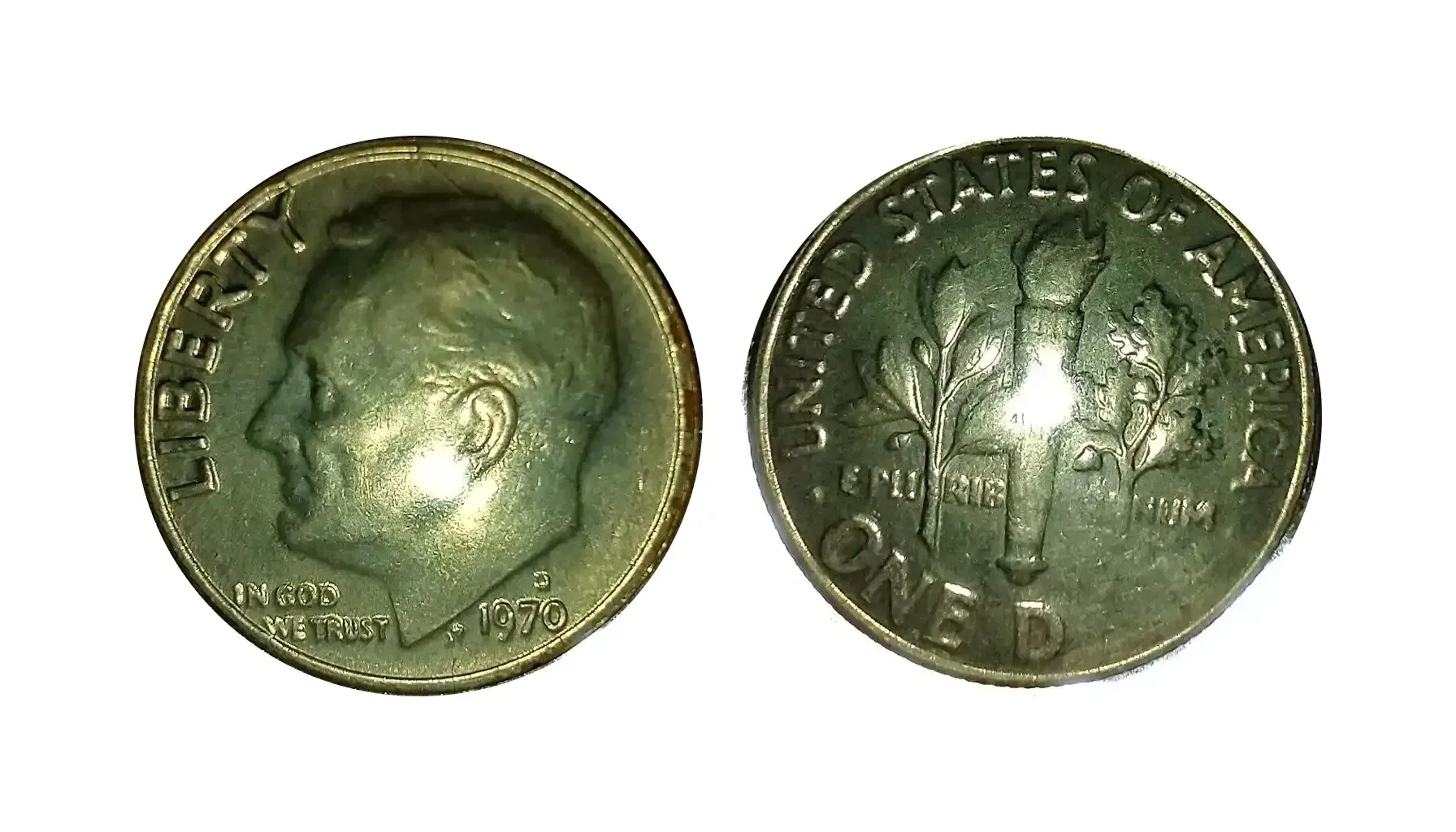
The 1970 P dime value is generally face value unless it's an exceptionally high-grade example or an error. This type of error occurs when a foreign object or debris (such as grease, lint, or wire) gets between the die and the planchet during the striking process. The object leaves an impression or outline on the coin's surface. The value depends on the size, nature, and clarity of the struck-through object's impression.
Market Value
Prominence and Type | Approximate Value (USD) |
Minor Grease (Circulated) | $5 - $15 |
Minor Grease (Unc) | $10 - $30 |
Moderate Struck-Through | $25 - $75 |
Significant Struck-Through | $75 - $250~ |
The value of 1970 dime may vary depending on the coin's condition, market demand, and other factors.
Die Caps
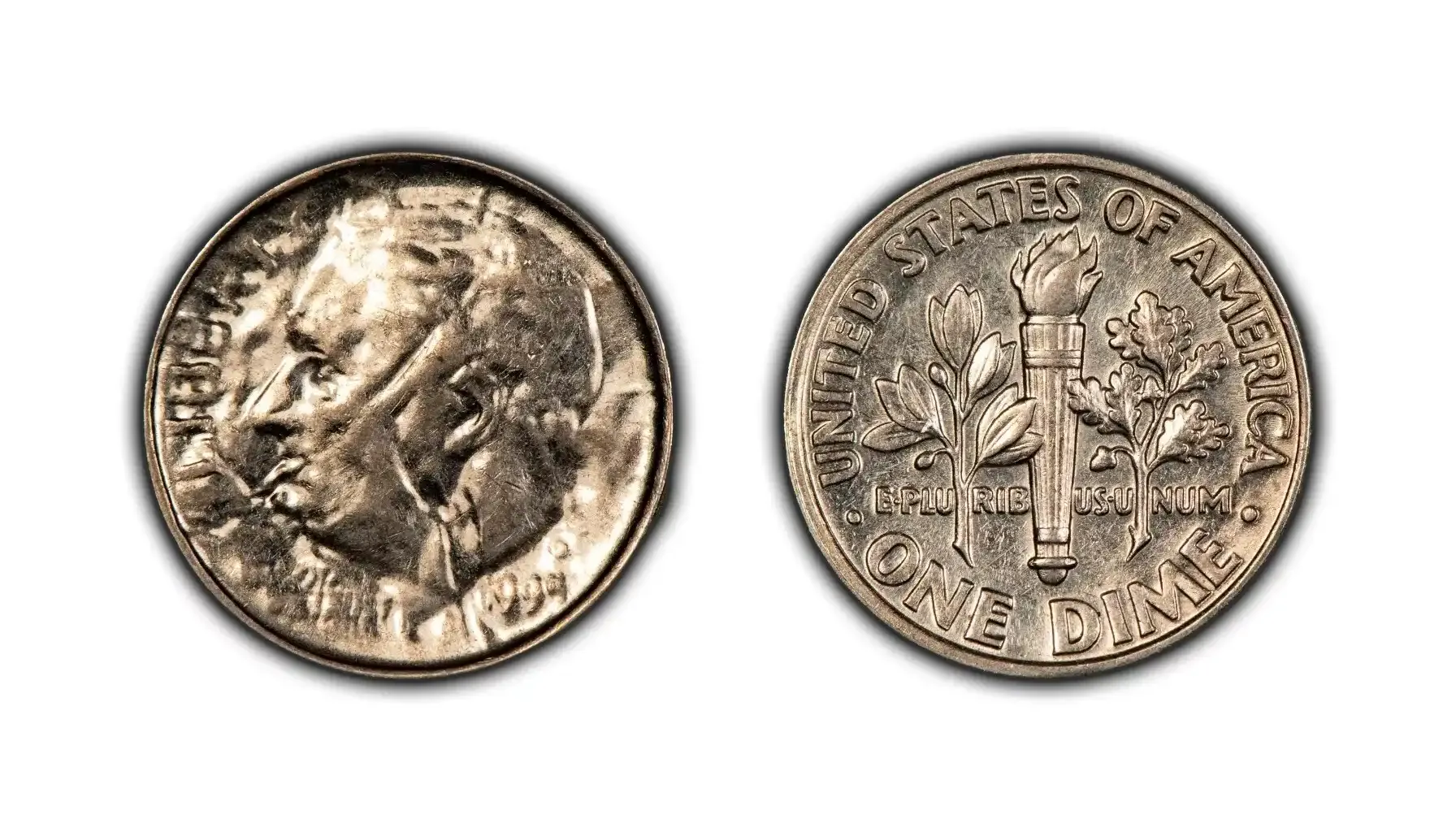
While most circulating 1970 dimes are not worth money beyond their face value, rare error varieties or high-grade proof issues can indeed command a premium among collectors. Subsequent planchets are then struck against the cap, creating "capped die" strikes. Die caps are highly dramatic errors and are relatively rare.
Market Value
Severity | Approximate Value (USD) |
Minor Cap | $100 - $300 |
Moderate Cap | $300 - $800 |
Significant/Deep Cap | $800 - $2,500~ |
The precise dime 1970 value may vary depending on the coin's condition, market demand, and other factors.
Die Breaks
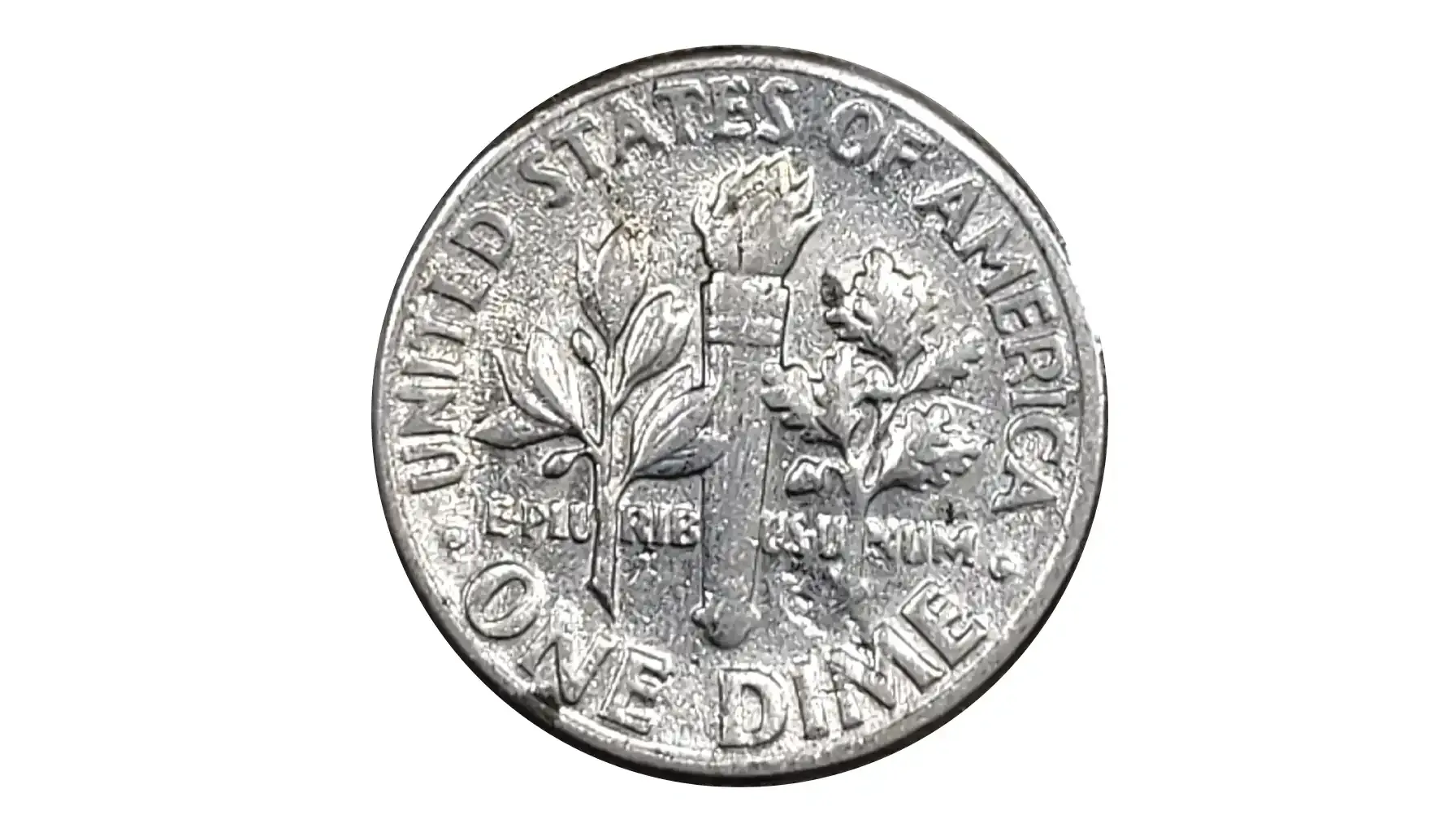
Understanding the 1970 no mint mark dime value requires knowledge of the Philadelphia mint's output and errors. Die breaks are cracks that develop in the die, which then transfer to the struck coin as raised lines or lumps. Die chips are small pieces of the die that break off, resulting in raised blobs on the coin. While common, particularly on older coinage, significant or unusually placed die breaks/chips can sometimes attract collector interest and a small premium.
Market Value
Prominence | Approximate Value (USD) |
Minor/Common | $1 - $5 |
Moderate/Noticeable | $5 - $20 |
Significant/Large | $20 - $75~ |
What is a 1970 dime worth vary depending on the coin's condition, market demand, and other factors.
Missing Clad Layer
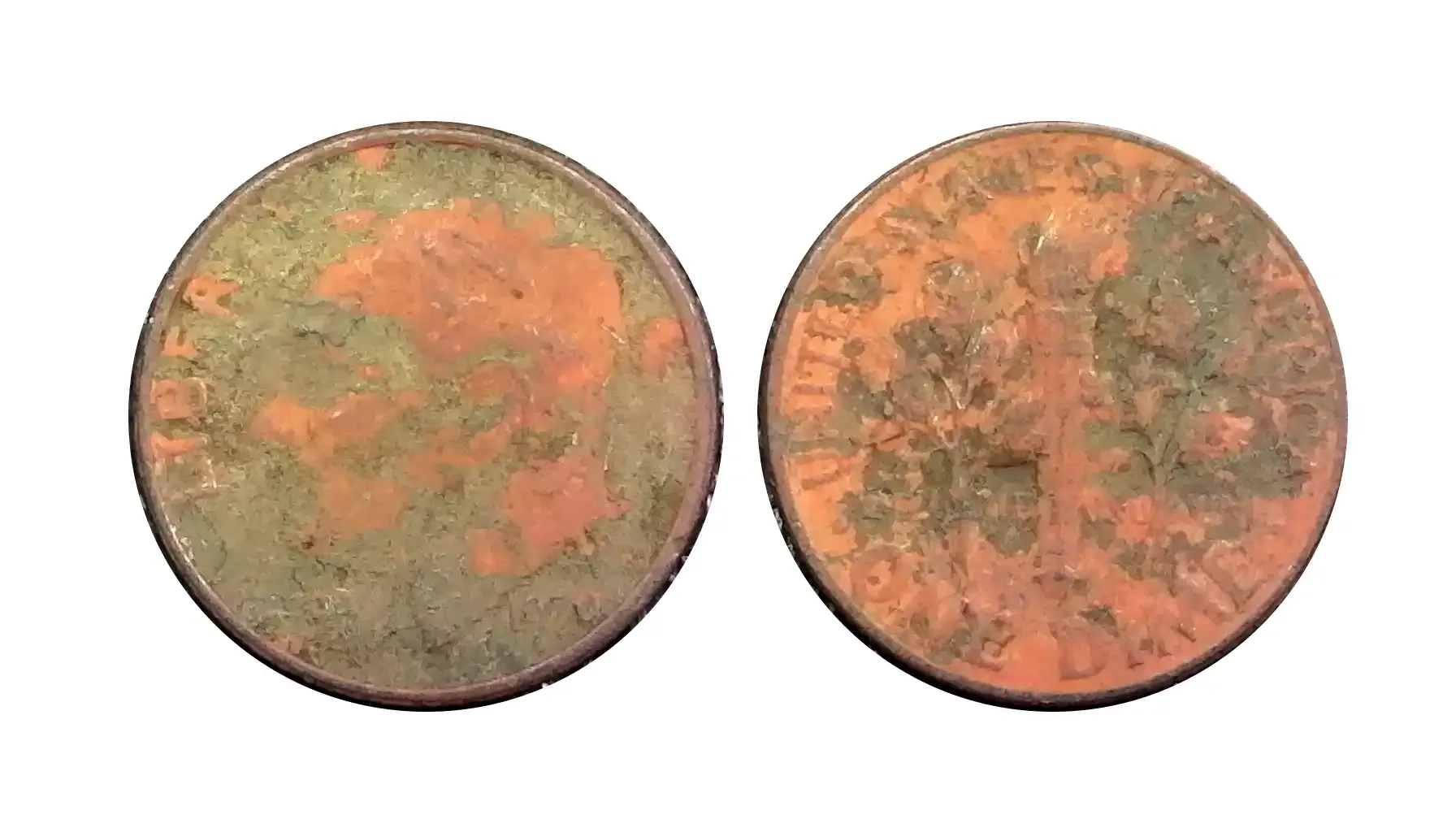
This significant error occurs when one or both of the outer copper-nickel clad layers fail to properly bond to the inner copper core during the planchet preparation process. If a coin is struck with a missing clad layer, it will appear to be entirely copper on one side and will be significantly underweight.
Market Value
Type and Extent | Approximate Value (USD) |
Partial Missing Clad | $50 - $200 |
Missing One Clad Layer | $200 - $700 |
Missing Both Clad Layers (Extremely Rare) | $1,000 - $3,000~ |
The 1970 no mint dime worth may vary depending on the coin's condition, market demand, and other factors.
A common question asked by new collectors is, is a 1970 dime worth anything more than face value? There is no single, definitive answer when it comes to the value of coins, and it always depends. A coin's worth is highly contingent on a multitude of factors, including its condition, rarity, the presence or absence of a mint mark, any known error varieties, current market demand, and even fluctuations in precious metal prices. Each specific coin needs to be evaluated individually against these criteria.

